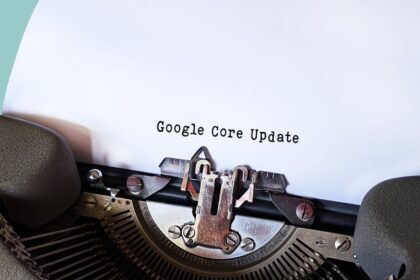Chapter 1: The Symbiotic Relationship: On-Page SEO and User Experience (UX)
On-page SEO, the practice of optimizing elements within a website to improve its search engine rankings, and User Experience (UX), the overall experience a user has while interacting with a website, are not mutually exclusive. They are, in fact, intrinsically linked. A website can be perfectly optimized for search engines with relevant keywords and meta descriptions, but if it provides a poor user experience – slow loading times, confusing navigation, unreadable content – visitors will quickly abandon it, leading to a high bounce rate and ultimately, a decline in search engine rankings. Conversely, a beautifully designed website with intuitive navigation and engaging content will struggle to attract visitors if it’s not properly optimized for search engines. The key to success lies in finding the right balance, creating a website that is both appealing to users and easily discoverable by search engines. This requires a holistic approach that considers both technical SEO aspects and user-centric design principles.
Chapter 2: Keyword Research: Laying the Foundation for Relevance
Keyword research is the cornerstone of any successful on-page SEO strategy. It involves identifying the words and phrases that users are typing into search engines when looking for information, products, or services related to your business. This information is crucial for optimizing your website content, meta tags, and other on-page elements to ensure that your website appears in relevant search results. Effective keyword research goes beyond simply identifying high-volume keywords. It also involves understanding user intent, analyzing competitor keywords, and identifying long-tail keywords (longer, more specific phrases) that can attract a highly targeted audience.
Tools like Google Keyword Planner, Ahrefs, SEMrush, and Moz Keyword Explorer are invaluable for keyword research. These tools provide data on keyword search volume, competition, related keywords, and more. When choosing keywords, consider the following factors:
- Search Volume: The number of times a keyword is searched for each month. Higher search volume indicates a larger potential audience.
- Competition: The level of competition for a keyword. Keywords with high competition may be more difficult to rank for.
- Relevance: How relevant the keyword is to your website content and target audience. Irrelevant keywords can attract the wrong type of traffic and lead to a high bounce rate.
- User Intent: The reason why users are searching for a particular keyword. Understanding user intent helps you create content that meets their needs.
Once you have identified a list of relevant keywords, prioritize them based on their search volume, competition, and relevance. Focus on incorporating these keywords naturally into your website content, meta tags, and other on-page elements. Avoid keyword stuffing, which is the practice of excessively using keywords in an unnatural way. Keyword stuffing can actually harm your search engine rankings and make your website content less readable for users.
Chapter 3: Crafting Compelling and User-Friendly Content
Content is king, and in the realm of online marketing, this adage holds true. High-quality, engaging content is essential for attracting and retaining visitors to your website. It also plays a crucial role in improving your search engine rankings. When creating content, focus on providing valuable information that meets the needs of your target audience. Consider the following:
- Understand Your Audience: Before you start writing, take the time to understand your target audience. What are their interests, needs, and pain points? What type of content are they likely to find valuable?
- Write Clear and Concise Content: Use clear and concise language that is easy to understand. Avoid jargon and technical terms that your audience may not be familiar with.
- Use Headings and Subheadings: Break up your content into smaller, more manageable sections using headings and subheadings. This makes it easier for users to scan your content and find the information they are looking for.
- Use Visuals: Incorporate images, videos, and other visuals to make your content more engaging and visually appealing. Visuals can also help to illustrate complex concepts and break up large blocks of text.
- Optimize for Readability: Use short paragraphs, bullet points, and white space to improve the readability of your content. Aim for a Flesch Reading Ease score of 60 or higher.
- Provide Actionable Advice: Offer practical advice and actionable steps that users can take to solve their problems or achieve their goals.
- Keep it Fresh: Regularly update your content to ensure that it is accurate, relevant, and up-to-date.
In addition to creating high-quality content, it is also important to optimize it for search engines. This involves incorporating your target keywords naturally into your content, using relevant headings and subheadings, and optimizing your images with alt text. Remember to prioritize user experience over keyword stuffing. Your content should be written for humans, not just for search engines.
Chapter 4: Optimizing Meta Tags: The Gateway to Higher Click-Through Rates
Meta tags are HTML snippets that provide information about a webpage to search engines and website visitors. They are located in the section of the HTML code and are not visible on the page itself. However, they play a crucial role in influencing search engine rankings and click-through rates. The most important meta tags for SEO are the title tag and the meta description tag.
- Title Tag: The title tag is the most important meta tag for SEO. It appears in the search engine results page (SERP) as the clickable headline for your webpage. It should be concise, descriptive, and include your target keyword. Aim for a title tag length of around 50-60 characters to ensure that it is fully displayed in the SERP.
- Meta Description: The meta description tag provides a brief summary of your webpage content. It appears below the title tag in the SERP. While the meta description tag is not a direct ranking factor, it can influence click-through rates. A compelling meta description can entice users to click on your website in the SERP. It should be accurate, engaging, and include a call to action. Aim for a meta description length of around 150-160 characters.
In addition to the title tag and meta description tag, there are other meta tags that can be used to provide additional information to search engines. These include the robots meta tag (which controls how search engines crawl and index your website) and the viewport meta tag (which ensures that your website is displayed correctly on different devices).
Chapter 5: Website Structure and Navigation: Guiding Users and Search Engines
A well-structured website with clear and intuitive navigation is essential for both user experience and SEO. A good website structure makes it easy for users to find the information they are looking for and helps search engines understand the relationships between different pages on your website.
- Create a Logical Hierarchy: Organize your website content into a logical hierarchy with clear categories and subcategories. This makes it easy for users to navigate your website and find the information they are looking for.
- Use a Consistent Navigation Menu: Use a consistent navigation menu that is visible on every page of your website. This allows users to easily navigate between different sections of your website.
- Use Breadcrumbs: Use breadcrumbs to show users their current location on your website and provide a quick way to navigate back to previous pages.
- Create a Sitemap: Create a sitemap that lists all of the pages on your website. This helps search engines crawl and index your website more efficiently.
- Use Internal Linking: Use internal linking to link between different pages on your website. This helps search engines understand the relationships between different pages and improves the overall user experience.
Avoid creating a website structure that is too deep or too complex. Users should be able to find the information they are looking for in just a few clicks. Also, avoid using too many layers of navigation, as this can make it difficult for users to find what they are looking for.
Chapter 6: Mobile Optimization: Catering to the Mobile-First World
Mobile devices account for a significant portion of internet traffic, and Google has adopted a mobile-first indexing approach, meaning that it primarily uses the mobile version of a website for indexing and ranking. Therefore, mobile optimization is no longer optional – it is a necessity for any website that wants to succeed in today’s digital landscape.
- Use a Responsive Design: Use a responsive design that adapts to different screen sizes and devices. This ensures that your website looks good and functions properly on all devices, from smartphones to desktops.
- Optimize Images for Mobile: Optimize images for mobile devices to reduce file sizes and improve loading times. Large images can slow down your website and frustrate mobile users.
- Use Mobile-Friendly Navigation: Use mobile-friendly navigation that is easy to use on touchscreens. Avoid using drop-down menus or other complex navigation elements that can be difficult to use on mobile devices.
- Use Touch-Friendly Buttons and Links: Use touch-friendly buttons and links that are large enough to be easily tapped on mobile devices.
- Test Your Website on Different Mobile Devices: Test your website on different mobile devices to ensure that it looks good and functions properly on all devices.
Google offers a Mobile-Friendly Test tool that you can use to check if your website is mobile-friendly. This tool will identify any issues that may be affecting your website’s mobile performance and provide recommendations for fixing them.
Chapter 7: Page Speed Optimization: Delivering Instant Gratification
Page speed, the time it takes for a webpage to load, is a crucial factor for both user experience and SEO. Users expect websites to load quickly, and they are likely to abandon a website that takes too long to load. Google also considers page speed as a ranking factor, so a slow-loading website can negatively impact your search engine rankings.
- Optimize Images: Optimize images by compressing them and using appropriate file formats (e.g., JPEG for photographs, PNG for graphics).
- Enable Browser Caching: Enable browser caching to store static resources (e.g., images, CSS files, JavaScript files) in the user’s browser. This reduces the need to download these resources every time the user visits your website.
- Minify CSS and JavaScript: Minify CSS and JavaScript files by removing unnecessary characters (e.g., whitespace, comments). This reduces the size of these files and improves loading times.
- Use a Content Delivery Network (CDN): Use a CDN to distribute your website content across multiple servers around the world. This allows users to download your website content from a server that is geographically closer to them, improving loading times.
- Choose a Good Hosting Provider: Choose a good hosting provider that offers fast and reliable hosting services. A slow or unreliable hosting provider can negatively impact your website’s page speed.
Google offers PageSpeed Insights, a tool that analyzes your website’s page speed and provides recommendations for improving it.
Chapter 8: Image Optimization: A Picture is Worth a Thousand Keywords
Images can enhance the visual appeal of your website and make your content more engaging. However, large, unoptimized images can slow down your website and negatively impact user experience and SEO.
- Choose the Right File Format: Use the appropriate file format for your images. JPEG is generally the best choice for photographs, while PNG is better for graphics with transparent backgrounds.
- Compress Your Images: Compress your images to reduce file sizes without sacrificing too much quality. There are many online tools and software programs that can be used to compress images.
- Use Descriptive File Names: Use descriptive file names that include your target keywords. This helps search engines understand what the image is about.
- Add Alt Text: Add alt text to all of your images. Alt text is a short description of the image that is displayed if the image cannot be loaded. It is also used by screen readers to describe the image to visually impaired users. Alt text should be descriptive and include your target keywords.
- Optimize Image Size: Optimize the size of your images to ensure that they are not larger than necessary. Large images can slow down your website and waste bandwidth.
Chapter 9: Schema Markup: Giving Search Engines a Deeper Understanding
Schema markup is a type of structured data that you can add to your website to provide search engines with more information about your content. This helps search engines understand the context of your content and display it in a more informative way in the search results.
Schema markup can be used to describe a wide variety of content types, including articles, products, events, reviews, and more. By adding schema markup to your website, you can improve your chances of appearing in rich snippets, which are enhanced search results that include additional information such as ratings, prices, and availability.
Google provides a Structured Data Markup Helper tool that you can use to generate schema markup code for your website.
Chapter 10: Local SEO Optimization: Reaching Your Local Customers
If you have a local business, local SEO optimization is crucial for attracting customers in your area. Local SEO involves optimizing your website and online presence to rank higher in local search results.
- Claim Your Google My Business Listing: Claim your Google My Business listing and fill out all of the information completely and accurately. This includes your business name, address, phone number, website URL, business hours, and a description of your business.
- Get Local Citations: Get local citations by listing your business in online directories such as Yelp, Yellow Pages, and Foursquare.
- Encourage Customer Reviews: Encourage your customers to leave reviews on your Google My Business listing and other review sites. Positive reviews can improve your search engine rankings and attract more customers.
- Optimize Your Website for Local Keywords: Optimize your website for local keywords by including your city and state in your title tags, meta descriptions, and content.
- Use Schema Markup for Local Business: Use schema markup for local business to provide search engines with more information about your business, such as your address, phone number, and business hours.
Chapter 11: User Engagement Metrics: Measuring Success Beyond Rankings
While search engine rankings are important, they are not the only metric that matters. User engagement metrics, such as bounce rate, time on page, and pages per session, provide valuable insights into how users are interacting with your website. These metrics can help you identify areas where you can improve your website to better meet the needs of your users.
- Bounce Rate: The percentage of users who leave your website after viewing only one page. A high bounce rate can indicate that your website is not relevant to the user’s search query or that your website has a poor user experience.
- Time on Page: The amount of time that users spend on a particular page on your website. A longer time on page can indicate that users are engaged with your content.
- Pages per Session: The average number of pages that users visit during a single session on your website. A higher pages per session can indicate that users are exploring your website and finding valuable information.
Use Google Analytics to track these user engagement metrics and identify areas where you can improve your website.
Chapter 12: Avoiding Over-Optimization: Staying on the Right Side of the Algorithm
While it is important to optimize your website for search engines, it is also important to avoid over-optimization. Over-optimization, also known as keyword stuffing, is the practice of excessively using keywords in an unnatural way. This can actually harm your search engine rankings and make your website content less readable for users.
Focus on creating high-quality, user-friendly content that naturally incorporates your target keywords. Avoid using the same keyword too many times on a page or in your meta tags. Also, avoid using hidden text or links to manipulate search engine rankings.
Google’s algorithms are constantly evolving to identify and penalize websites that engage in over-optimization tactics. Therefore, it is important to focus on creating a website that is both appealing to users and easily discoverable by search engines. The best approach is to prioritize user experience and create content that is valuable, informative, and engaging. When you focus on providing a positive user experience, you are more likely to attract and retain visitors, which can ultimately lead to higher search engine rankings.











